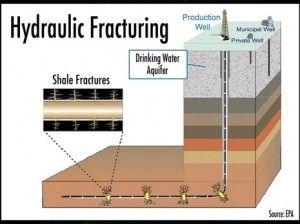Big Oil Backs Killing Keystone XL Pipeline
By CHRISS STREET
Gov. Jerry Brown and other California environmental activists are enthusiastic about advancing “sustainable” energy, such as windmill and geothermal. But oil and natural gas exploration are rapidly advancing — if they’re allowed to happen.
With America on the verge of achieving energy independence in the next five years by dramatically expanding domestic energy production, why should anyone be surprised that it’s Big Oil money that’s out to kill the Keystone XL Pipeline to prevent competition?
Most Americans were stunned when, in an election year, the U.S. State Department on January 18 denied the Keystone XL building permit to construct a 1,661-mile pipeline through Montana, South Dakota Nebraska, Kansas, Oklahoma and Texas.
The media blamed the rejection on opposition from environmental activists, such as Robert Redford, who commented: “Canada wanted to send the dirtiest oil on the planet through the heart of America so that they could access export routes.” But polls demonstrated the promise of 6,000 unionized construction jobs and lower-energy costs fostered 67 percent support to build the pipeline and only 25 percent against.
For the last three years, the mantra of the Obama Administration, Gov. Jerry Brown and the Agenda 21 “sustainability” crowd had been the coming of “Peak Oil.” That’s the point in time when the maximum rate of global petroleum extraction would be reached, then the rate of production would terminally decline and the prices would rise exponentially.
“Peak oil” justified more money worldwide for the first time being invested in alternative vs. traditional energy sources to generate electricity. Projects for wind, sun, water and biomass captured $187 billion, while only $157 billion went into coal, oil and gas.
Unfortunately for “sustainable” investors, this was before the realization that “fracking” and other technology was drastically increasing U.S domestic energy production, causing the gas price to be cut in half. Based on the U.S. Energy Information Administration data, wind now costs 50 percent more, photovoltaic 300 percent more and solar almost 500 percent more in comparison to burning natural gas to generate electricity. Retail utility rates in California are 220 percent higher than natural gas due to alternative supply mandates.
| Energy Source | Price per Kilowatt Hour | Multiple of Price of Natural Gas |
| Natural Gas | $0.066 | Baseline |
| Hydro Electric | $0.086 | 30 percent more Expensive |
| Coal | $0.095 | 40 percent more Expensive |
| Wind | $0.097 | 47 percent more Expensive |
| Photovoltaic Cells | $2.11 | 320 percent more Expensive |
| Solar Thermal | $3.12 | 470 percent more Expensive |
Big Oil Backs Alternative Energy
Big oil and gas producers with proven energy reserves quietly supported the Obama Administration’s alternative energy initiatives because they expected the ludicrously high cost of alternatives to drive up prices for their production. According to the Bureau of Labor Statistics, since Barack Obama has been president, the price of a gallon of gasoline has jumped by 83 percent.
Historically, domestic energy companies drilled for oil and got natural gas as a side product. If there wasn’t a pipeline to transport the gas in the neighborhood, they usually burned it off at the well head. Almost all the domestic oil companies at one time had oil and gas pipelines, but the business is highly regulated and allows only annual price increases equal to inflation plus 1.5 percent.
Consequently, energy companies spun off pipelines to the public in the form of highly leveraged Master Limited Partnerships. Currently, there are 2.3 million miles of oil and gas pipeline in America. Much of that pipeline is ready 40 years old and needs to be updated and replaced. Pipeline capacity had been growing by only 3 percent per year due the $609,000 construction cost per mile and the expectation domestic production would soon “terminally decline.”
Fracking and other technologies have hugely expanded domestic energy production potential. Wildcatters are now drilling for spectacular amounts of natural gas and getting oil as the bonus product. With only five local gas pipelines to service North Dakota’s portion of the Bakken field, drillers have focused on oil production, which skyrocketed to 558,000 barrels a day from 6,000 in 2006. In just two years, the active drilling rig count vaulted from 33 to 181.
100 Years of Natural Gas
President Obama, who went gaga funding alternative energy projects, admitted in his State of the Union speech last month, “We have a supply of natural gas that can last America nearly 100 years,” He added, “And my administration will take every possible action to safely develop this energy. Experts believe this will support more than 600,000 jobs by the end of the decade.” But that will never happen without big pipelines to transport new oil and gas production to market.
Since the cancellation of the Keystone XL Pipeline, the U.S. average retail price of gasoline for the month of January jumped to its all-time high at $3.51 per gallon, while the price of Bakken oil fell from $95 to $70 due lack of transportation capacity. Cancellation of the Keystone XL pipeline has been bad for American workers, bad for American consumers and bad for America’s energy independence! But it sure has been sweet for Big Oil.
Feel free to forward this Op Ed and or follow our Blog at www.chrissstreetandcompany.com
If you would like Chriss Street to speak to you organization, please e-mail [email protected].
Thank you also for the success of Chriss Street’s latest book: “The Third Way,” available in hard copy or for Kindle at: www.amazon.com.
Related Articles
Good and bad news on bullet train(s) front
March 24, 2013 By Chris Reed As I wrote last week, the budget that Senate Democrats have embraced contains so
State peddles idea that bullet train contractors are investors
On Jan. 11, 2010, the Legislative Analyst’s Office issued a report on the latest iteration of the business plan for
Eminent domain mass delusion hits San Berdoo
July 16, 2012 by Wayne Lusvardi A few hundred years ago there was the famous Dutch Tulip Mania of 1637.




